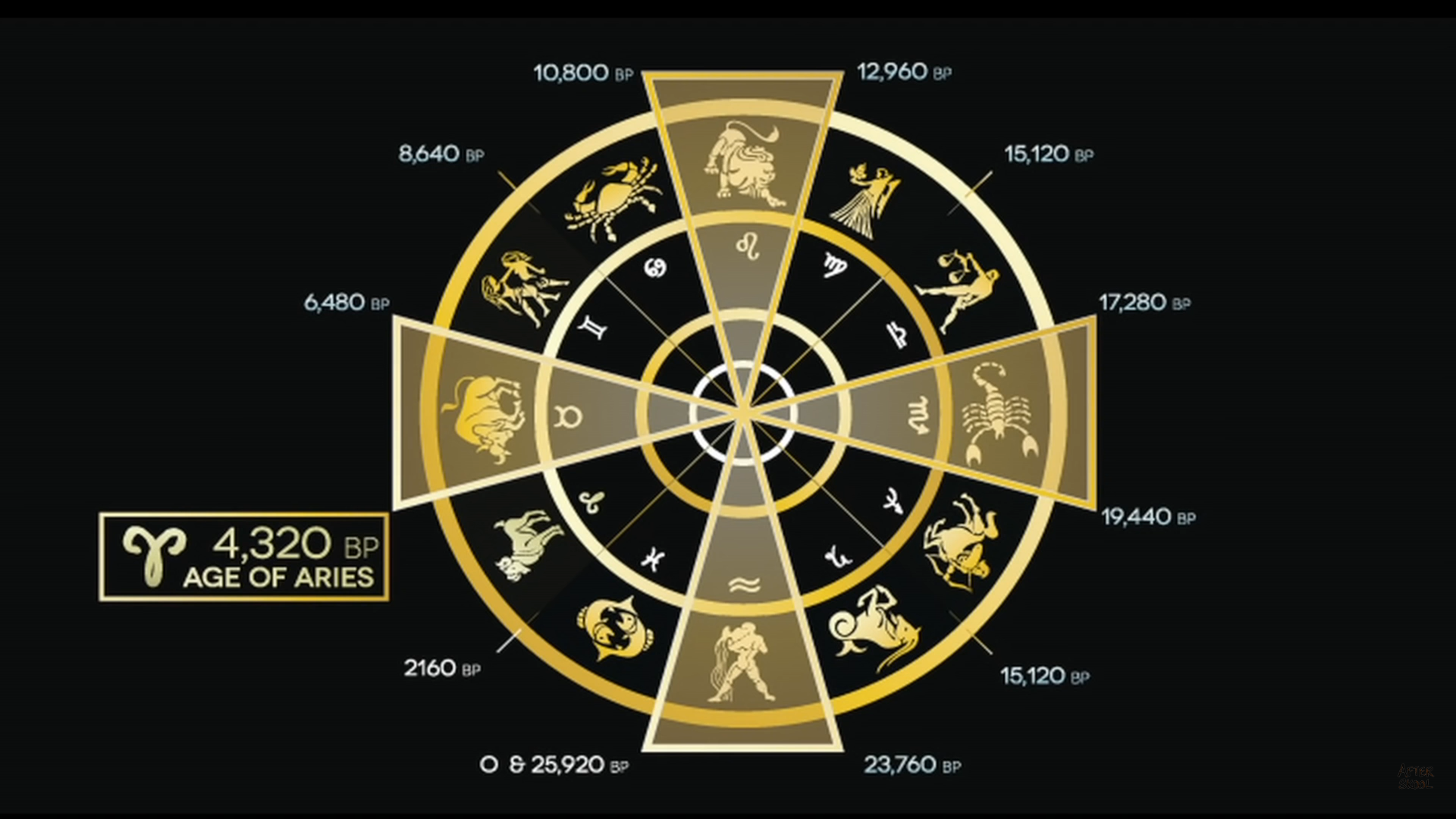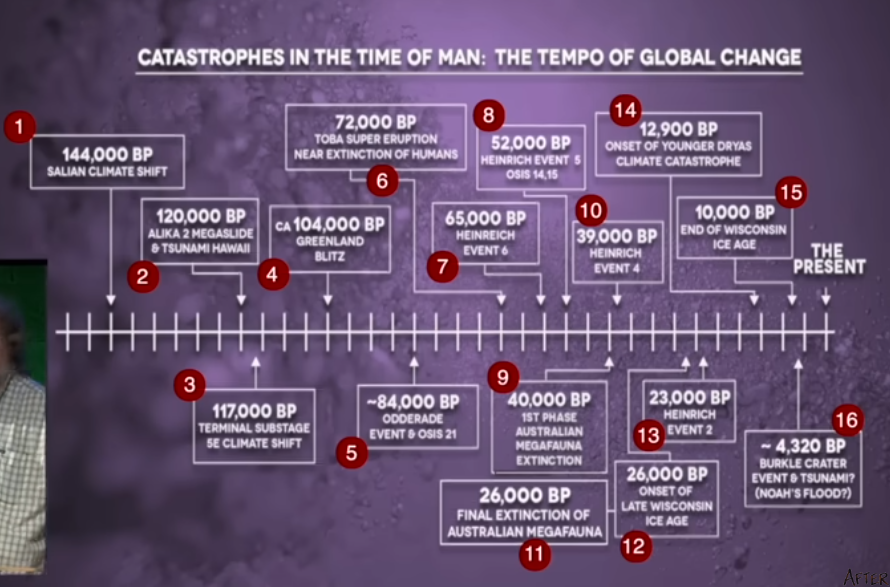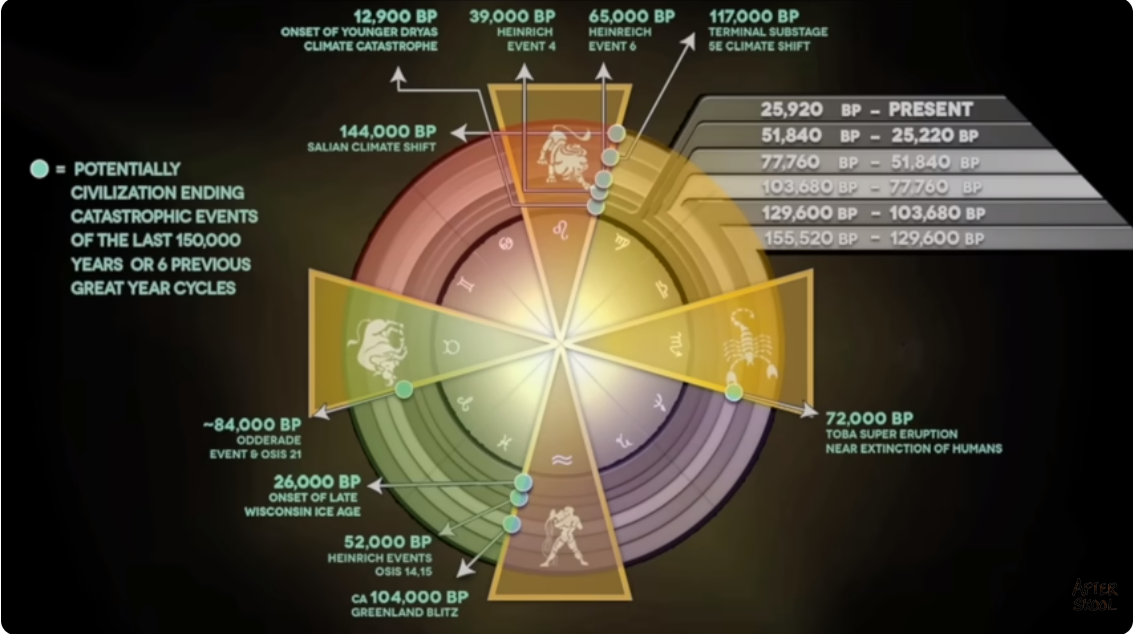It appears the world is on the cusp of something new. How do we know that? Simply put, things are changing at a rapid rate. We were taught in school to consider history; we either learn from it and move on or repeat it. With a huge push in the early 2020’s to erase certain parts of history, we must ask the “why” question. What is it about history that we are unwilling to revisit? We saw the decimation of statues, name changes of sports teams, banning specific books, etc. because certain organizations decided these items (or people representing those items) were offensive. Supposedly, by removing these things, it was a step in a direction to rewrite history. I ask another question… Does this actually help us rewrite history or is it an attempt to cover it up? How can we learn from our mistakes if we don’t review the situations that caused problems we now live with? We can’t change unless we’re willing to see where we messed up in the first place.
As we look at history, we can see everything that has occurred since the year 1700 is basically a repeat of changes from from earlier ages. The only difference? We have a modern twist or a “variation on a theme” of similar events that appear to escalate during transition times from age to age. Yes, other interesting stuff happens throughout each age but during times of transition, everything is condensed and multiplied. Themes include civil unrest, major weather events, political unrest, great advances in technology, philosophical changes in ideas and understanding, scientific advances, etc. Weather events, pandemics, plagues, and natural disasters also occur more frequently in the transition periods between ages. I write specifically about such events in the book, Kingdom Shift: How to Prepare for God’s Global Reset.

Figure 1
To help understand the “ages,” look at Figure 1 from the video by Randall Carlson (link in sources) where he shows the 25,000 “great year” cycle on a wheel. BP is “before present” with the approximate date range for each age. We know from historical evidence there’s a transition period between the ages lasting anywhere from 100 to 500 years. There’s no set-in-stone method of determining the exact time the shift occurs. However, we can look for patterns in how ages shifted in the past.
Carlson points to natural and often cataclysmic events that tend to occur in the shifts between ages as seen in Figure 2. They are listed on a timeline and are numbered 1 – 16. As in Figures 1 and Figure 3, all pictures are screenshots from the video (listed in the sources).
In Figure 3, the same events on placed on the great year wheel for ease of visualizing exactly at which ages these calamities occur. Do you see the pattern? These patterns are what help scientists determine when a transition begins and ends. Notice that each "cycle" within a great year is 25,000 years which is divided into 12 "great months" of approximately 2,000 years each.
Question? Is it possible that the creation of the earth as described in Genesis 1 actually refers to "great" years, months, and days? If that indeed is the case, Adam and Eve may have existed at least 25,000 years ago. Depending on how many great years were between Adam and Eve and the Israelites, it's hard to say for sure. It's something to at least consider.
Moving along to the two comparisons of natural events over the last 25,000 years in Figure 2 and Figure 3.

Figure 2

Figure 3
We are in the age shift between Pisces and Aquarius. Notice the historical events that have occurred during this age shift (Figure 3). Certain groups would like us to believe what we’re going through now has to do with climate change. However, according to history, we’re witnessing a normal cycle. From a spiritual perspective, I discuss why these disasters may continue to occur in the book Kingdom Shift. Because I discuss that in detail in the book, feel free to purchase it on Amazon and check out my thoughts on the subject.
For now, we’ll look beyond natural disasters, pandemics, and other things not necessarily created by humans for clues on what’s occurred from the beginning of civilization as we know it starting with the oldest archeological discoveries about the time of Göbekli Tepe (about 11,000 years ago) until now. We can probably put Göbekli Tepe (located in Turkey) and other megalithic sites near it during the Age of either Virgo or Leo which isn’t long after the last ice age.
Included in the events listed below are the major events from Jewish history as written about in the Bible. Some scholars place Biblical events at different times so no specific dates are listed. If a Biblical event or person appears during an age transition, those are listed.QUESTIONS to ask as you compare the various ages:
- What similarities do you see?
- Can you see a theme in the age transitions?
- What events stick out to you and why?
- How could this information help us understand the transition from Pisces into Aquarius?
Age of Gemini approximately 6450 – 6200 to 4300 BC
- Communication, information exchange and intellectual curiosity.
- The first proto-writing systems, such as the Vinča symbols, could date back to the Gemini age, suggesting that the first seeds of written communication were evident earlier than generally accepted.
- Expansion of trade networks. Trading not only goods but also ideas and cultural practices across regions would have led to the mingling and fusion of cultures and the rapid spread of innovations.
- The development of advanced technologies, like plows and wheel-based transportation, also indicates Gemini's curiosity and innovation.
- Technological advancements would have spurred societal growth, cultural exchange, and the spread of ideas.
- Adam and Eve sometime during this age? Or, possibly an earlier Age of Gemini (50,000 years ago)?
Age of Taurus approximately 4300 – 4000 BC to 1700 – 2000 BC
- The great flood (Noah’s flood) as a possible transition from Gemini into Taurus (the beginning of Taurus).
- Time of Isaac is a possible transition period from Taurus to Aries (at the end of Taurus).
- Cuneiform tablets are considered the first form of writing at this time.
- Flourishing of early civilizations and the growth of art, culture, and the material aspects of human life.
- The Bronze Age falls within this period in mainstream history, marked by advancements in metalworking and the proliferation of trade networks.
- Technological and economic developments echo Taurus's association with material growth and wealth accumulation.
- The rise of early civilizations, such as the Sumerians, Egyptians, and the Indus Valley, also marks this period.
- Increased agricultural productivity, infrastructural development, and wealth accumulation.
- The construction of lasting monuments such as Stonehenge. These structures might have served not just as religious or astronomical tools, but also as expressions of societal wealth and power. Some scholars place the Egyptian Pyramids during the time of Göbekli Tepe (Ages of Virgo and Leo between 13,000 to 8600 BC.)
Age of Aries approximately 2000 – 1700 BC to 200 BC – 1 CE (AD)
- Abraham during the transition from Taurus to Aries.
- Time period of Isaac, Jacob, Joseph, and Moses.
- The Exodus occurred somewhere between the 15th century around 1450 BC with a late date in the 13th century around 1270 BC.
- Invention of the alphabet (proto-Sinaitic script thought to be Hebrew).
- Significant military advancements, territorial expansion, and a shift toward more aggressive societal structures.
- Several powerful empires, including the Assyrians, Persians, Greeks, and Romans, rose to prominence.
- Mainstream history during this period is characterized by territorial conquests and the spread of cultural and political influence.
- This period also saw significant advancements in military technology, from the development of iron weapons to the creation of advanced tactical formations like the Greek phalanx and the Roman legion.
- The emergence of monotheistic religions, like Zoroastrianism and later Judaism, suggests a significant shift in spiritual practices.
Age of Pisces 200 – 1 BC to 1700 – 2100 CE
- Birth and death of Jesus at the beginning of Pisces.
- The beginning of Christianity from approximately 30 CE onward.
- Unification of the Christian church by Constantine around 324 CE.
- Rise in spirituality and the blurring of cultural, societal, and even personal boundaries.
- The advent of Christianity and later Islam during this period marked significant shifts in religious practices. The focus on compassion, forgiveness, and spiritual unity embodied by these religions.
- This period also saw the continued rise and spread of empires, leading to the intermingling and fusion of cultures, reflecting of boundary dissolution. The spread of the Roman Empire, for example, led to the assimilation and integration of various cultures under one political entity.
- The Renaissance and the Age of Enlightenment, characterized by a renewed interest in the arts, sciences, and individual human rights.
- Significant advancements in human thought, emphasizing empathy, curiosity, and the exploration of new ideals.
Age of Aquarius 1700 (transition) – 2020 to 3700 – 4000 AD (approximately)
- Transition out of the “church age” into ??
- Lots of civil, religious, governmental, and cultural changes during the transition period
- Age of Enlightenment appears to be when this age began (1700’s) – author’s opinion based on evidence of recurring themes in previous age changes.
Where Does This Lead Us?
Many sources are listed at the end of this article for personal research. The goal here is to provide the basic information to get you started on your own journey of discovery. It’s obvious we’re in another transition period where the Church Age will morph into something different. If we look at the types of events that occur religiously during the various age shifts, we can see a variety of religions through paganism, gnostic beliefs, mysticism, the beginning of Judaism, various eastern religions, and many more. It’s obvious throughout history that spiritual beliefs “flavored” everyday life. This includes atheism because no belief in God is still a belief system that’s adhered to. Atheism is about worshiping self.
During the change of each age, religious beliefs appear to go through major shifts. At the beginning of Pisces, Jesus is born, and a variety of sects (religious groups) break off from Judaism and are called “Christians.” Just like today, there were many different groups and belief systems centered about Jesus or “Christus” as he was called. Once Constantine made Christianity the centralized religion in Rome, it changed the “flavor” of how Christianity functioned. In Paul’s time, how the Ekklesia (church) functioned was very different than how Constantine set up his new church. Many writings that were considered part of the early church were abandoned in favor of more recent writings that lined up with Constantine’s desire for a certain hierarchy and structure. This included bishops and priests. This is discussed in more detail in a previous article (in the sources section).
Conclusion
Our focus now becomes WHAT will the church look like as the transition from Pisces to Aquarius continues? What can we glean from history?
- Judaism was established at the end of Aries and continues to flourish today.
- A newer religion – Christianity, formed out of Judaism as Pisces began.
- Many eastern religions have similar stories that mirror those in the Bible that also became prominent during Pisces.
- Great persecution and uprisings occur during the times of religious transition from age to age.
- Governments often want to control religions.
- Religion continues to be a key factor in people’s daily lives no matter what age it is.
Looking at the transition between Pisces to Aquarius, we see similar adjustments between Judaism and Christianity. Now, we’re transitioning from how we view Christianity into something new. However, we don’t yet know what that will look like. Christianity fulfills scripture in Isaiah that talks about a coming savior. Jesus fulfilled Old Testament scriptures where he became the bridge between us and God. This allowed for direct communion with God.
Constantine put the church back under a priestly covering. Was that what God intended? If we look at the early church, Paul had a different idea which was abandoned in favor of Christianity functioning a bit more like Judaism but with a twist. Rules and laws applied but instead of sacrificing animals, we were “atoned” through a priestly blessing and forgiveness via the blood of Jesus. Most Christian organizations still function under a similar format as Constantine set up with variations on what the priestly covering looks and feels like.
The question begs to be asked again… is this what God intended? When Moses went up the mountain, the entire nation of Israel was invited to go with Moses. Out of fear, they opted for Moses to be the leader so they’d have someone to follow and sent him up the mountain alone. God wanted relationship with the entire nation, not just one man. Did they miss a golden opportunity?
Upon Jesus’ death, we were once again invited into that place of intimacy when the veil ripped in the temple. This is symbolic of the priestly duties no longer being needed. From that point on, we had direct access to God, which is what Paul taught. Then Constantine stepped in and brought the church back into the priestly order. God wants relationship with His people. Must we go through a priest for that relationship? Based on what God said to Moses, the death of Jesus as an atonement for our sins, and the veil in the temple ripping after Jesus’ death, I’d say the answer is no – we don’t need a priest to cover us any longer.
Based on history, it appears the Constantinian church will continue into and through Aquarius. Some will stay with the church while others venture into the unknown for what’s yet to come. Like Paul originally began, I suspect there will be groups of people with similar ideas that function as a unit in a specific “call” for each group. Leadership stays within the group where they answer to one another to keep them in balance. They may be mystical groups, those with a prophetic, healing, or apostolic emphasis, and even some evengelical. What can we learn from the early church? We each stay in our "lane" and do what God has called us to do while respecting the call of others even if the beliefs are different than ours. Had groups around the time of Christ done this, it's possible that the church would look very different today.
It all boils down to God desiring personal relationship with His people. As we foster personal intimacy with God, we become the co-creators with God that’s spoken about throughout the Bible and other writings that never made it into the Bible. When we learn to understand our role in the creative process, I suspect that many of the natural disasters and events that occur throughout the ages will subside because we’ve stepped into our Sonship role as “Sons of God.” From there, creation no longer groans for the manifestation of the Sons of God because we’ve answered the call God offered to the Israelites. “Come up here” is what John was invited to do in Revelation 4:1. God invited not only Moses up on the mountain but the entire Israelite community. We’ve been offered the same opportunity. Will we accept the call? The more of us that say, “yes,” I suspect we’ll begin to function as we were ordained from the beginning of creation. However, it must come from relationship with God first, which is what Constantine missed.
Shalom!
Del, June 2024
Sources
Research for this article came from the following sources. However, much of the information in these sources is not included in this article. They are listed as a starting point for you to do your own research. Happy hunting!
- 2000-Year-Old Bible Revealed Terrifying Knowledge about the Human Race! https://youtu.be/qsK4x-ycjYw?si=3SE15dEHUx5VbBHp
- The Ancient Greek World by Ryan Reeves https://youtu.be/qzStS_NSs-s?si=TLcx9YyAa-q2HgZb
- Apostolic Fathers by Ryan Reeves https://youtu.be/az4sztb0Tlc?si=HYNaXn4ZBsnfL807
- Timeline of Jewish History at Chabad.org https://www.chabad.org/library/article_cdo/aid/3915966/jewish/Timeline-of-Jewish-History.htm
- The Ancient Roman World by Ryan Reeves https://youtu.be/Sa_E9QBHe30?si=eTY0Ul0XbLjcZ7eM
- Sidereal Astrology https://masteringthezodiac.com/
- Kingdom Shift: How to Prepare for God’s Global Reset https://www.amazon.com/Kingdom-Shift-Prepare-Global-Reset/dp/173409561X
- HIDDEN MATHEMATICS - Randall Carlson - Ancient Knowledge of Space, Time & Cosmic Cycles https://youtu.be/R7oyZGW99os?si=WhCdxTK5seKWtC-m
- Church Age vs Kingdom Age
